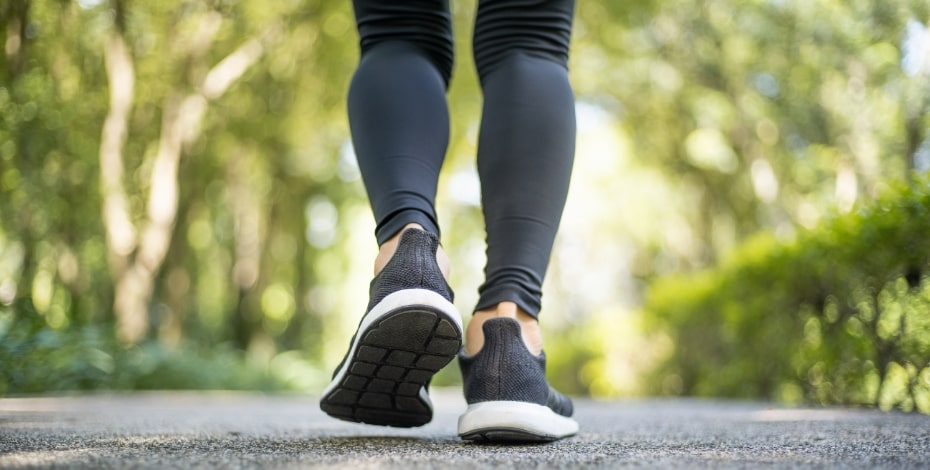
Walking to prevent low back pain

JOURNAL OF PHYSIOTHERAPY A group of academic physiotherapists in Sydney recently led a qualitative study examining what motivates individuals to start a walking program for the prevention of low back pain. First author Natasha Pocovi, who is a PhD candidate at Macquarie University, answers some questions about the study.
How many patients were involved in the study and how were they identified?
This project was a complementary study to the WalkBack Trial, where we explored the effectiveness of a physiotherapist-prescribed, individualised and progressive walking program for the prevention of low back pain recurrences.
For the main trial (for which we are yet to publish the final results), we recruited 701 participants and in this qualitative study, we took a closer look at the experiences of 22 participants who had completed the WalkBack program.
What motivates individuals to start a walking program for the prevention of low back pain?
I think it is important to reflect on why a walking program was appealing to start with.
Participants voiced their hesitations about engaging in high-impact and intensive exercise modes, believing that it might ‘flare up’ their back pain.
By contrast, walking was considered to be a safe form of exercise that was unlikely to trigger exacerbations.
People’s motivations to engage in the WalkBack Trial were split into two main categories.
The first was specific to the prevention of low back pain.
Participants had a desire to reduce the frequency, severity and impact of future recurrences.
They also wanted to self-manage their back pain and reduce their reliance on the healthcare system, noting the frustration of continuously setting aside time and money to treat repeated exacerbations.
The second motivation was to improve their general health.
Participants hoped that the walking program might help with weight management, improving fitness, the management of chronic health conditions, stress reduction and improving sleep.
What strategies optimise short-term and long-term adherence to a walking program?

Natasha Pocovi is exploring the motivations of people with low back pain in starting a walking program.
Participants described accountability to the treating physiotherapist as important in the early stages of adherence to the walking program.
In the trial, accountability took the form of regular follow-up sessions with the physiotherapist to review progress, adjust exercise targets and troubleshoot barriers to engagement, using elements of health coaching.
We also encouraged participants to record their exercise using a walking log and pedometer and the results were presented to the physiotherapist at each session for discussion.
Participants found the combination of all these strategies helpful and delivery was well received in both face-to-face and telehealth formats.
Enjoyment of the program and satisfaction with outcomes (feeling better both mentally and physically) were important to long-term exercise adherence.
The participants used walking to explore their local environment, build social networks and establish new hobbies (eg, hiking), leading to greater enjoyment of the program.
They found that the benefits accrued from walking (such as improved low back pain, reduced stress and better sleep) were lost if they stopped their walking program, so if participants had a period of non-adherence, the loss of these benefits was a strong factor in returning to exercise.
What strategies can physiotherapists incorporate into clinical practice to facilitate commencement of and adherence to a walking program?
Based on findings from our study, our team put together a comprehensive list of recommendations to help clinicians to promote walking and other physical activity programs to their patients.
The key recommendations are as follows.
- Ask about the patient’s current level of physical activity, sedentary behaviour and willingness to change their habits.
- Make time to understand patient perceptions of physical activity and address misconceptions or fears related to exercise.
- Plan the program together, considering the patient’s exercise preferences, goals, functional ability and lifestyle. Support problem-solving by discussing potential barriers and how the patient may mitigate them.
- Monitor adherence regularly and modify (increase or decrease) exercise targets as required, providing positive support even when exercise targets are unmet.
- Monitor a patient’s compliance with exercise by using exercise logs and pedometer data.
- Support long-term adherence by asking the patient to reflect on additional health benefits attained (such as better sleep, reduced stress and weight loss). Reflect with the patient on whether health benefits from walking are sustained during periods when walking has ceased.
- Work with the patient to ensure that the ongoing program continues to be enjoyable (eg, exercising in new environments, forming social exercise networks or progressing to a different exercise type to avoid monotony).
What should research in this area move on to?
As physiotherapists, we commonly prescribe physical activity-based interventions but if patients are not motivated to adhere to them, the effectiveness is likely to be reduced.
Further research needs to be done into what factors improve patient uptake of exercise-based programs as well as how we can best help physiotherapists facilitate this.
>> Natasha Pocovi is a physiotherapist, PhD candidate, research assistant and casual tutor at Macquarie University. Her research interests focus on the prevention of musculoskeletal pain and improvement of the delivery of care.
© Copyright 2024 by Australian Physiotherapy Association. All rights reserved.





